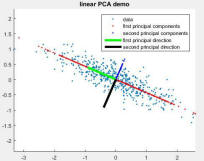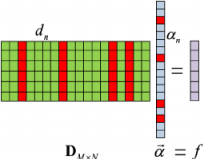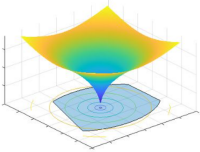Machine Learning (Fall 2025)
Administrative Matters
Instructor: Lin ZHANG
TA: Linfei LI, cslinfeili@tongji.edu.cn
Office: RM418L, Jishi Building, Jiading Campus
Lecture Slides
|
|
Slides |
Reading Materials |
|
|
|
|
|
|
1. P. Viola and M.J. Jones, Robust real-time face detection, IJCV' 04 2.
Y. Freund and R.E. Schapire, A
Decision-Theoretic Generalization of on-Line Learning and an Application to
Boosting, Journal of Computer and System Sciences,1995 |
|
|
|
1. M. Turk and A. Pentland, Eigenfaces for recognition, Journal of Cognitive Neuroscience' 91 2.
PCADemo:
a matlab program used in our lectures to
demonstrate the basic concepts related to PCA |
|
|
|
1.
J. Wright et al., Robust face
recognition via sparse representation, IEEE PAMI' 09 5. Basis pursuit denoising. In applied mathematics and statistics, the l1-minimization problem is named basis pursuit denoising (BPDN) 6. David L. Donoho and Yaakov Tsaig, Fast Solution of l1-norm Minimization Problems When the Solution May be Sparse, 2006 |
|
|
|
|
|
|
|
1. K. He et al., Deep Residual Learning for Image Recognition, CVPR, 2016 2. G. Huang et al., Densely Connected Convolutional Networks, CVPR, 2017 3. J. Redmon et al., Yolo: 9000 better, faster, stronger, CVPR, 2017 4. N. Ma et al., ShuffleNet V2: Practical Guidelines for Efficient CNN Architecture Design, ECCV, 2018 5.
J. Redmon et al., YOLOv3: An Incremental
Improvement, arXiv, 2018 |
|
|
|
1. "Part I: Theory" of the book "S. Boyd and L. Vandenberghe, Convex Optimization, Cambridge Press, 2004". |
|
|
|
1. A. Kowalczyk, Support Vector Machines Succinctly, Syncfusion, 2017 2. Demos for SVM, https://github.com/csLinZhang/CVBook/tree/main/chapter-14-SVM |
|
|
|
1. A. Vasvani et al., Attention is all you need, NeurIPS, 2017. 2. A. Dosovitskiy et al., An image is worth 16X16 words: Transformers for image recognition at scale, ICLR, 2021. 3. Z. Liu et al., Swin transformer: Hierarchical vision transformer using shifted windows, ICCV, 2021. 4. N. Carion et al., End-to-end object detection with transformers, ECCV, 2020. 5. Y. Zhao et al., DETRs beat YOLOs on real-time object detection, CVPR, 2024. 6. H. Zhang et al., VarifocalNet: An IoU-aware dense object detector, CVPR, 2021. |
|
|
|
1. Xuan Shao, Lin Zhang* et al., "MOFISSLAM: A multi-object semantic SLAM system with front-view, inertial and surround-view sensors for indoor parking", IEEE Trans. Circuits and Systems for Video Technology, vol. 32, no. 7, pp. 4788-4803, 2022. 2. Tianjun Zhang, Nlong Zhao, Ying Shen, Xuan Shao, Lin Zhang*, and Yicong Zhou, “ROECS: A Robust Semi-direct Pipeline Towards Online Extrinsics Correction of the Surround-view System”, in: Proc. ACM MM, pp. 3153-3161, 2021. 3. Lin Zhang et al., "Vision-based parking-slot detection: A DCNN-based approach and a large-scale benchmark dataset", IEEE Trans. Image Processing, vol. 27, no. 11, pp. 5350-5364, 2018. |
Assignments
Notes:
1. Compress all files into a .rar file whose name is composed of student name and ID.
2. For the programming assignments, please make sure your program can successfully run on TA's machine.
3. All the documents you hand in, including comments in the source codes, should be in English.
4. Please send your solutions to TA (Linfei Li, cslinfeili@tongji.edu.cn) and confirm with TA that he has received your email successfully.
1.
Assignment 1 (Due: Nov. 2, 2025) scores for assignment 1
2.
Assignment 2 (Due: Dec. 14, 2025) supermarket.mp4
3.
Assignment 3 (Due: Dec. 28, 2025) mysvm.m, test.mp4
Created on: Sep. 14, 2025
Last updated on: Dec. 4, 2025









